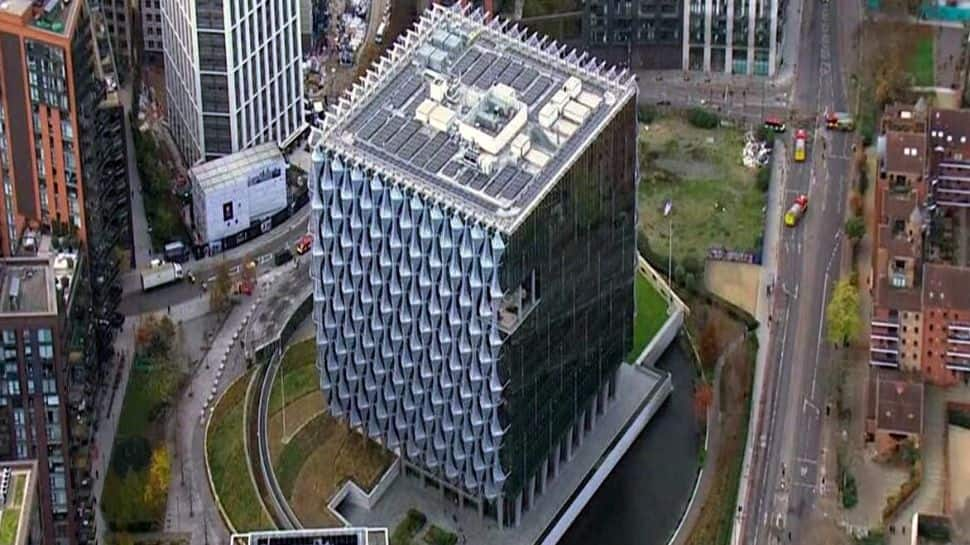Infra
Research project will assess how infrastructure upgrades can unlock east London growth | New Civil Engineer

Schemes from the Bakerloo line extension to Lower Thames Crossing will form part of a major project to analyse how infrastructure can unlock growth in disadvantaged areas of east London.
Local London, an alliance of nine boroughs in the east of London, has appointed consultancy Ekosgen to undertake a far-reaching project to analyse the impact of investing in infrastructure.
The Local London alliance comprises Barking and Dagenham, Bexley, Bromley, Greenwich, Havering, Newham, Enfield, Redbridge, and Waltham Forest, collectively home to 2.6M residents and 100,000 businesses.
Local London is formed of nine east London boroughs
They form the fastest growing part of London with average growth over 10% between 2011-2021. Six of the boroughs have population growth above the London average (7.7%) with the populations of Barking and Dagenham, Greenwich, Havering, Newham, and Redbridge all with growth of over 10%. Of all London boroughs, Barking and Dagenham had the third highest increase with 17.6%.
The alliance says that despite this growth, investment in transport infrastructure has lagged demand, leading to house building rates less than half that of the rest of London in some boroughs.
It says that improving key transport links and public transport is vital for connecting residents to employment and education opportunities, as well as generating sustainable growth. It is lobbying for accelerated investment into key transport infrastructure in the sub-region and has appointed economic and social research specialist Eksogen to analyse the impact of investing in transport in the sub-region.
The project will use existing research to quantify the benefits that can be unlocked through the priority investments identified in the Local London Transport Policy Position document. Its analysis will encompass an assessment of the role of a number of projects as catalysts for housing and employment.
These projects include the A13 and South Barking Improvements, which entail the construction of a tunnel for a 1.3km stretch of the A13 between the Lodge Avenue and Goresbrook interchanges. This would act as a catalyst for regeneration, releasing land for 5,000 homes and creating space for parks and high quality industrial and commercial uses including a new London Overground station.
According to Local London’s position document, Transport for London (TfL) and the London Borough of Barking and Dagenham have agreed a package of measures for the A13 and the South Barking growth schemes. These include replacing the expired Lodge Avenue flyover, new green bridge(s) over the A13, improvements to Lodge Avenue and Renwick Road junctions, a new station at Castle Green, and improved north/south bus links. The flyover works are funded and will start in 2024/5 – studies to develop the supporting schemes are in progress and estimated costs are circa £250M. Together these schemes are essential to ease traffic bottlenecks and serve over 20,000 new homes in South Barking. However, the construction of the flyover will also cause significant disruption to the road networks.
Key rail projects in the position document – and therefore Ekosgen’s analysis – include the Bakerloo line extension. At present, the Bakerloo line terminates at Elephant and Castle, but an extension to the line could support 150,000 additional public transport trips and 20,800 fewer car trips each day, 20,400 additional homes and almost 189,500 sqm of additional commercial floorspace, catalysing new transit-orientated communities in South East London.
TfL is currently considering plans to extend the Bakerloo line as far as Lewisham. The estimated cost of an extension would be between £4.7bn to £7.9bn (in 2017 prices) with an estimated seven years to construct.
Other rail projects relevant to the research include the Elizabeth line to Ebbsfleet and Enfield to Liverpool Street Overground.
Lower Thames Crossing is also being assessed as part of the analysis, along with the River Roding Crossing. According to the position document, the latter “is a barrier to east-west movement between Newham and Barking. There are currently limitations to the future growth of the area including the presence of the Beckton sewage works and a number of operational wharfs”.
Local London contends that in the long term and as the area develops, there will be a need for new east-west connectivity, particularly for public transport, pedestrians and cyclists. A new crossing of some sort will be necessary.
Stratford International station (pictured) is another area of concern. The original intended purpose of the station was to act as the London stop for regional Eurostar trains bypassing St Pancras and continuing to other destinations in Britain. The £210M scheme was completed as part of the upgrade of the Channel Tunnel line between St Pancras and Folkestone. However, these services did not come into being, leaving only the domestic Southeastern trains serving the station.
According to the position document: “There is considerable untapped potential for this station for both international passengers, as well as high value light freight.”
Meanwhile Walthamstow Central Station is a sub-regionally significant station, one of the busiest in London outside Zones 1-2. However, according to the position paper, TfL does not currently have any allocated capital funding, so is working with Waltham Forest Council to develop the full business case for the project in preparation for future TfL capital funding settlements and bids to other sources of funding, including Greater London Authority (GLA) more widely and central Government.
Ekosgen’s analysis will also assess the Thames ferry crossings and the Thames piers and wharves development including river bus options, along with Thamesmead and Beckton Riverside Public Transport Programme, including a DLR extension to Belvedere.) Under this latter scheme TfL is considering extending the DLR to Beckton Riverside and Thamesmead, to improve transport connections and enable the construction of up to 25,000-30,000 new homes along the route.
Also part of the analysis will be Beam Park, a new neighbourhood in the south of the London Borough of Barking and Dagenham and the London Borough of Havering, as well as key transport schemes such as Superloop, a network of 10 express bus routes in outer London.
Local London chair and leader of the London Borough of Bexley Teresa O’Neill said: “As the fastest growing part of London, we need investment in transport infrastructure to ensure residents can access work, education and leisure activities easily. Ekosgen’s research will quantify the economic growth, housing and job supply benefits of investing in transport, and identify projected transport needs of this fast-growing part of London. This is about ensuring inclusive and sustainable growth across our boroughs now and in the future.”
Ekosgen director Margaret Collins said “This is an important piece of work which will help to drive economic growth across this sub-region. The work builds on recent studies carried out across the country to help secure investment in places, and our local track record in this part of London.”
Like what you’ve read? To receive New Civil Engineer’s daily and weekly newsletters click here.










